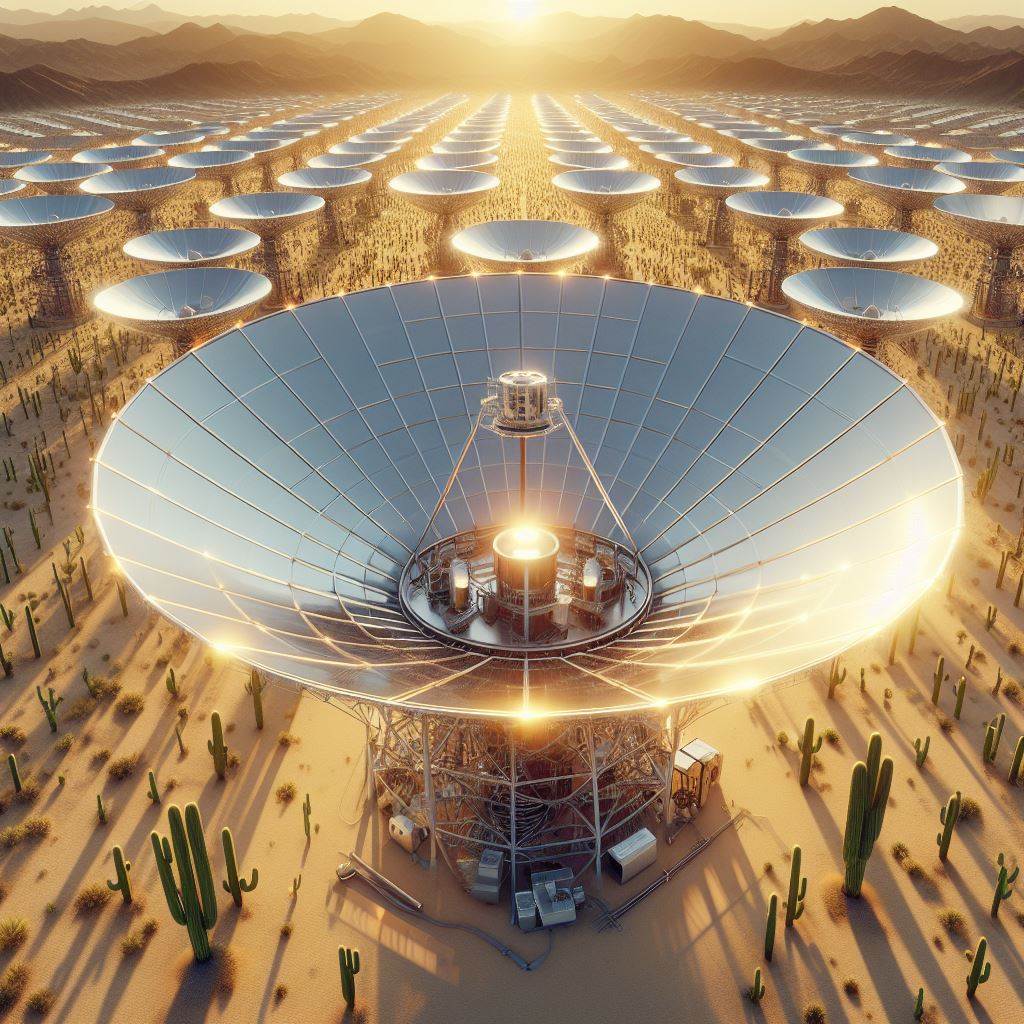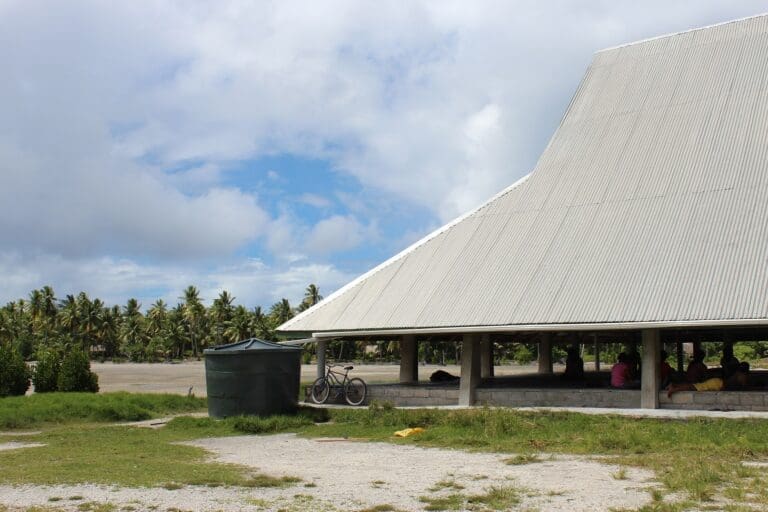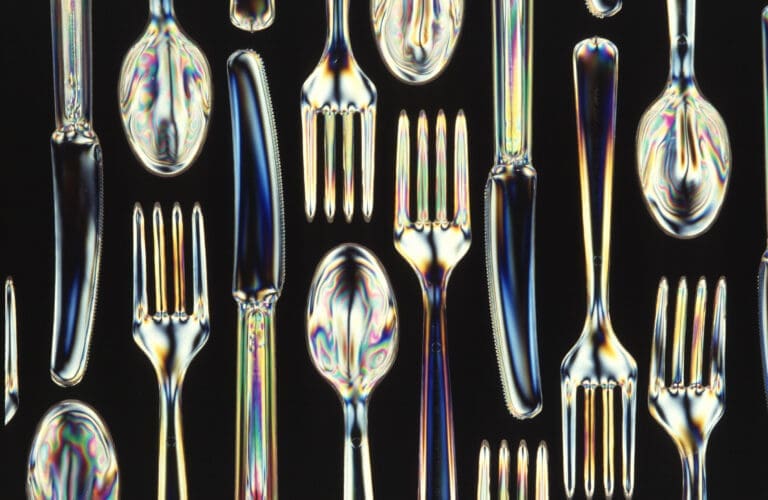Concentrated Solar Power (CSP), also known as concentrating solar-thermal power, is a technology that harnesses the sun’s energy in a different way compared to traditional solar photovoltaic (PV) systems. CSP technology concentrates solar thermal energy by using mirrors. At a CSP installation, mirrors reflect the sun to a receiver that collects the heat energy. That heat is then used to power an engine or turbine which is connected to an electricity generator. CSP systems can also incorporate heat storage using molten salt, for example, from which electricity can be produced as needed, e.g. during the night or evening peak demand times.[1][2]
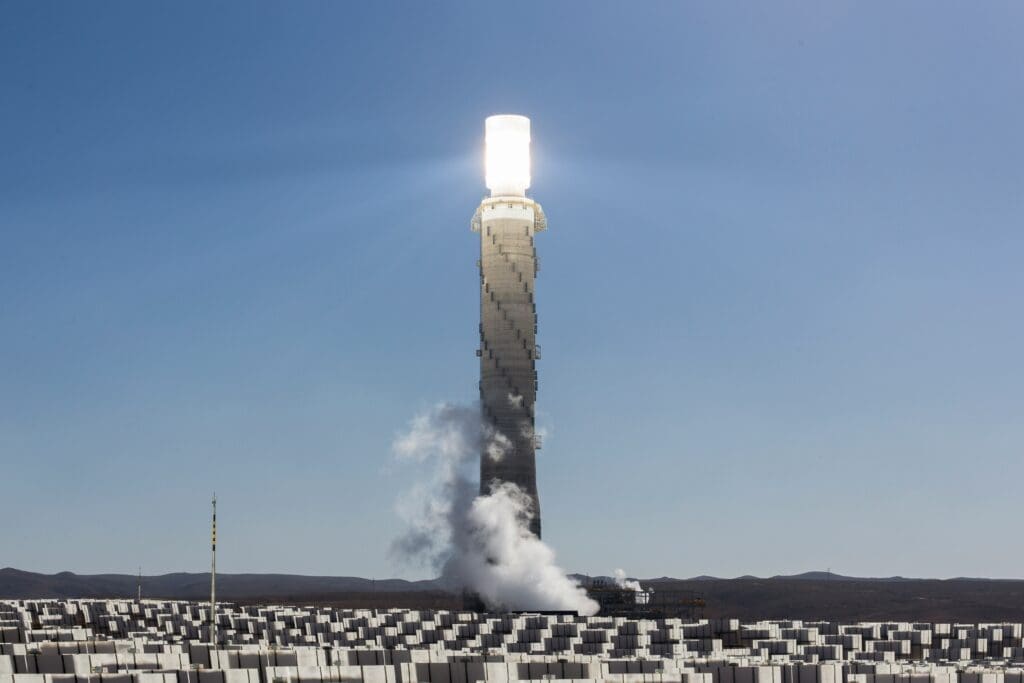
Types of CSP Systems
CSP systems come in all shapes and sizes, but most installations fall into one of four major categories[1]:
Parabolic dishes: With parabolic dish concentrated solar power systems, mirrors are set up in a satellite-dish shape with a receiver mounted in the middle, away from the mirrors. Sunlight reflects off the mirrors and hits the receiver focal point, which typically has a heat engine mounted directly on it.
Solar power towers: Solar power towers have a host of mirror reflectors at the ground level, also known as heliostats. Thermal energy is then concentrated on the top tower section.
Parabolic troughs:A parabolic trough is shaped like a long, curved mirror that resembles a “U” or a parabola when viewed from the side. The inner surface of the trough is lined with a polished metal mirror. Reflected sunlight hits a focal line, where usually a tube filled with liquids like water or melted salt is located. The heat transfer fluid running through the tube is used to heat steam and drive a standard turbine generator.
Linear Fresnel systems: Linear Fresnel systems employ flat or slightly curved mirrors that are mounted on trackers on the ground. These mirrors are configured to reflect sunlight onto a linear receiver tube fixed in space above the mirrors. Sometimes, a small parabolic mirror is added atop the receiver to further focus the sunlight. Electricity generation is similar to the parabolic trough system.

Facts and Figures
In 2022, Spain recorded the highest installed concentrated solar power (CSP) capacity in the world, with 2.3 gigawatts (GW). The United States ranked second and China third, with 1.5 GW and 596 megawatts (MW), respectively.[3]
New Technologies
Heliogen, Inc., a leading provider of AI-enabled concentrating solar energy technology, has completed two key product development milestones related to its “Capella” Project. They are the deployment of the first commercial-scale centrifugal particle receiver for on-sun testing and completion of the design verification of the prototype particle receiver for Capella.[4]
The centrifugal particle receiver is used to generate electricity and high-temperature industrial heat very efficiently. Solid particles, like granular bauxite, are directed into a rotating receiver, absorbing concentrated sunlight and heating up rapidly. These hot particles are then stored in a silo for industrial process heat applications or energy storage.[4]
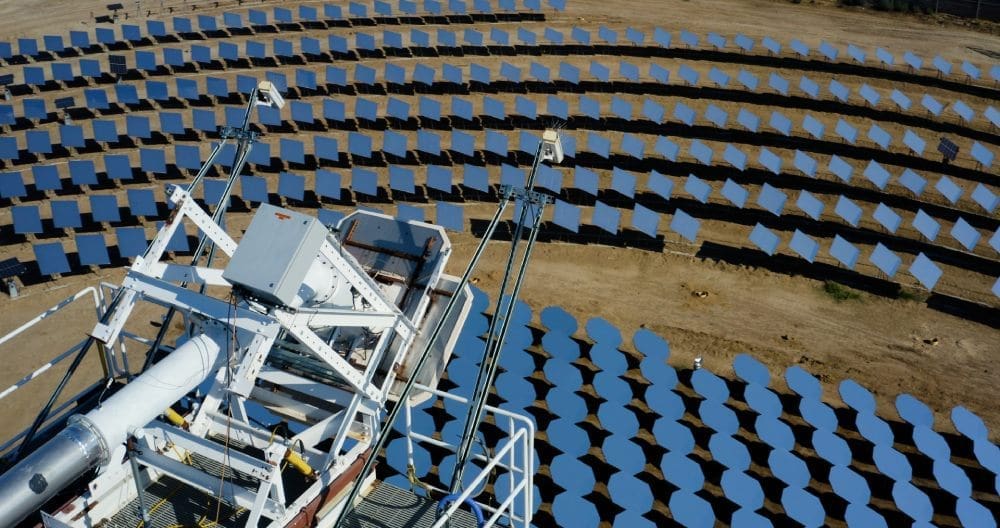
Material to Achieve More Than 600 Degrees Celsius
In general, bauxite is an ore from which aluminum is extracted, and it is known for its high aluminum content and hardness.[5]
For the CSP application, however, bauxite powder is sintered, meaning it becomes more compact and granular, with typically 1-2 mm grain size. Such sintered bauxite grains have proven to possess an excellent thermal conductivity. Based on this property, process temperatures higher than 600 degrees Celsius (approx. 1100 degrees Fahrenheit) can be achieved in CSP systems.[6]

Conclusion: Photovoltaics and Concentrated Solar (Heat) Power Complement Each Other
Concentrated solar power is a technology that has the potential to significantly contribute to the world’s renewable energy mix. In particular in areas with (less expensive) PV solar panel systems, the CSP concept comes handy due to the heat storage capabilities and providing electricity when PV cells are not operational, e.g. after sunset. With ongoing research and development, CSP technology continues to evolve, offering more efficient and cost-effective solutions for harnessing the sun’s abundant heat energy.
Sources:
[1] https://www.energysage.com/about-clean-energy/solar/contentrated-solar-power-overview/
[2] https://en.wikipedia.org/wiki/Concentrated_solar_power
[3] https://www.statista.com/statistics/494169/global-installed-concentrated-solar-power-csp-capacity-by-key-country/
[4] https://www.heliogen.com/news/two-milestones-achieved-in-ai-enabled-concentrated-solar-power/
[5] https://en.wikipedia.org/wiki/Bauxite
[6] https://elib.dlr.de/96432/1/Properties%20of%20granular%20materials_SOM_rev1_150527x.pdf

